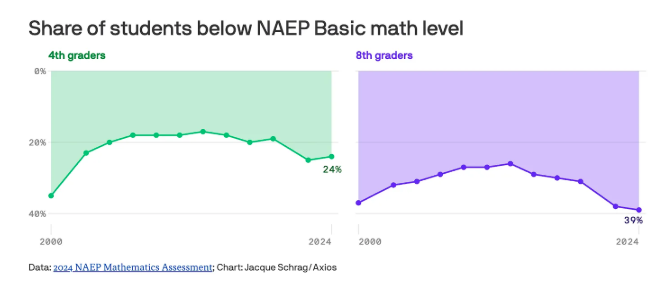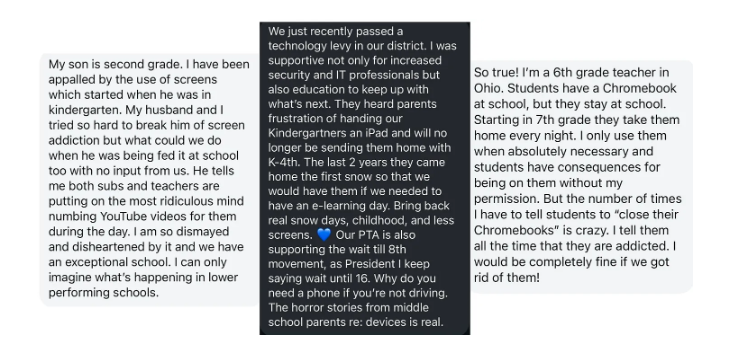Are School-Issued Devices To Blame For Plummeting Standardized Test Scores?
Is it time to limit all screens in school, not just smartphones? Dr. Jean Twenge’s recent New York Times opinion essay, “The Screen That Ate Your Child’s Education,” is reigniting a heated conversation about whether putting a laptop or Chromebook in every student’s hands has actually helped — or quietly harmed — American education.
She argues that the nationwide push to integrate digital devices into learning has failed to deliver on its promises. Instead, she says schools have unintentionally created a learning environment full of distraction, weaker comprehension, and slipping test scores.
BY THE NUMBERS
In the U.S., standardized test scores fell to their lowest levels in 20 years in 2023/24. Globally, similar trends are being seen. While COVID-19 learning disruptions contributed, the decline actually began around 2012, coinciding with the rise of smartphones and heavy device use inside schools. And while many schools have already banned smartphones, they still rely heavily on Chromebooks and other laptops.
The author points to several problems related to these devices:
Constant digital distraction — with students drifting to YouTube, games, messaging apps, and streaming during class. And in some cases, even explicit content.
A 2023 UNESCO report found that excessive device use harms learning, and in one study, students at Michigan State spent nearly 40% of class time on non-class activities like social media and videos.
A Common Sense Media survey found that about one-fourth of American teenagers admitted to seeing pornographic content during the school day — and nearly half of them viewed it on a school-issued device.
When Mo News Producer Lauren taught 4th Grade in Washington, D.C. in 2021, she caught a student Googling “girls butts” in class — and images appeared despite school safeguards. The incident underscores how young students often lack the tech literacy to use these devices safely, while also adding yet another thing teachers must monitor.
A shift away from paper-based reading and writing, which research shows can improve retention, focus, and depth of thought.
Studies show that students who took handwritten notes are more than 50% likely to earn A’s, while those who typed notes were 75% more likely to fail compared with those who took notes by hand.
Equity issues, where students with weaker self-regulation are disproportionately harmed by open-access devices.
Though, it should be noted that during COVID lockdowns, it was students without access to devices that missed classes.
THE FIX: Twenge urges schools to drastically restrict or lock down student devices — or even eliminate them altogether — and give parents the option to opt out of school-issued laptops and tablets. This comes as school cellphone bans have become more mainstream.
MO NEWS COMMUNITY REACTS
Seldom are there issues where nearly everyone in the Mo News community agrees, but in this case, the universal sentiment is that the current model is flawed. (See the messages above.) Even those who are “pro-tech” in the classroom emphasize a need for stronger guardrails and less screen time.
Teachers in our community also point their fingers at statewide tests, many of which are conducted online. Teachers are then expected to prepare their students for digital exams or essay-writing.
Parents say they want better controls, or limits on bringing the devices home at night.
However, one parent notes that for students with certain disabilities, the technology can be a positive game-changer.
💻 BUT, WAIT: Dr. Twenge doesn’t have causal data proving that devices directly harm student learning; instead, she pieces together evidence from multiple studies to support her argument.
🚨 BEFORE WE BAN EVERY DEVICE: Some experts say this is a reminder to pause — don’t toss every device out the window just yet — and recognize that technology has also brought real benefits, from enabling instruction during COVID to making coding and other lessons more engaging, and improving communication and collaboration among students, teachers, and parents. The challenge ahead is to think about the best ways to use the technology, because it’s not going anywhere.



